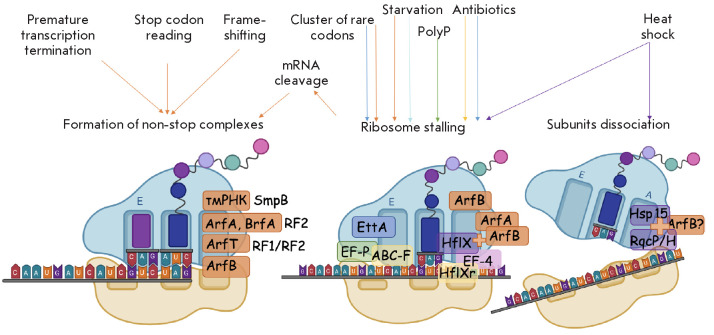Fig. 1.
Main causes of translational stalling in a bacterial cell and ways of solving these problems. The figure shows possible causes of translational stalling in a bacterial cell and the tools used by the cell to solve the problems. Left: a non-stop complex formed during translation. This type of substrate is recognized by the factors causing emergency translational termination, followed by the hydrolysis of the peptidyl-tRNA (tmRNA, ArfA, BrfA, ArfB, ArfT). Middle: a ribosome stalled on an intact template. In the case of starvation, this ribosome is stabilized in a hibernation state by Etta; during the passage of a polyproline sequence, EF-P promotes the resumption of translation. Resumption of translation is also provided by EF-4. If this complex is formed under the action of an antibiotic, it can be a substrate for a number of ABC-F proteins, HflX, and, possibly, HflXr. If stalling is caused by a cluster of rare mRNA codons, then the ribosome is likely rescued by ArfB. Right: spontaneous dissociation of ribosomal subunits. The RqcP/H and Hsp15 factors can promote the release of the 50S subunit. (All illustrations are created on BioRender.com)

